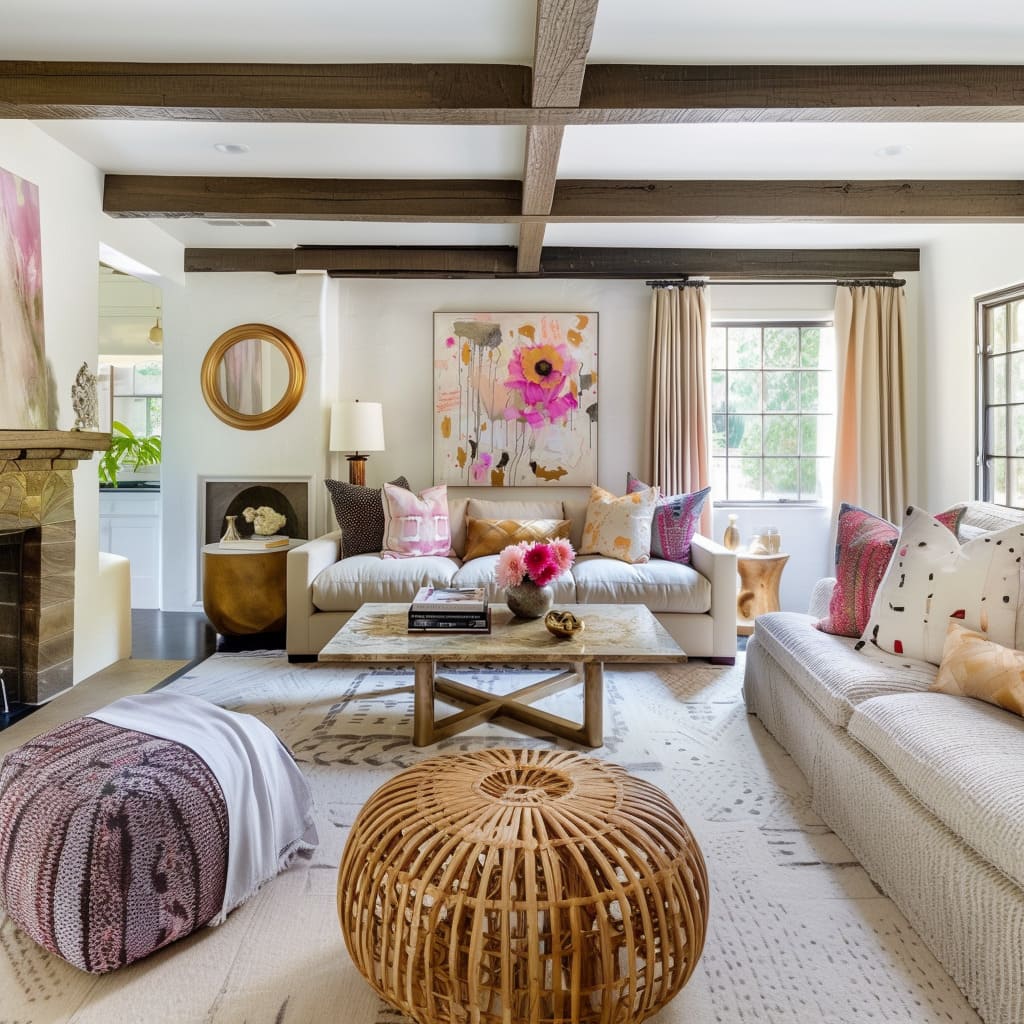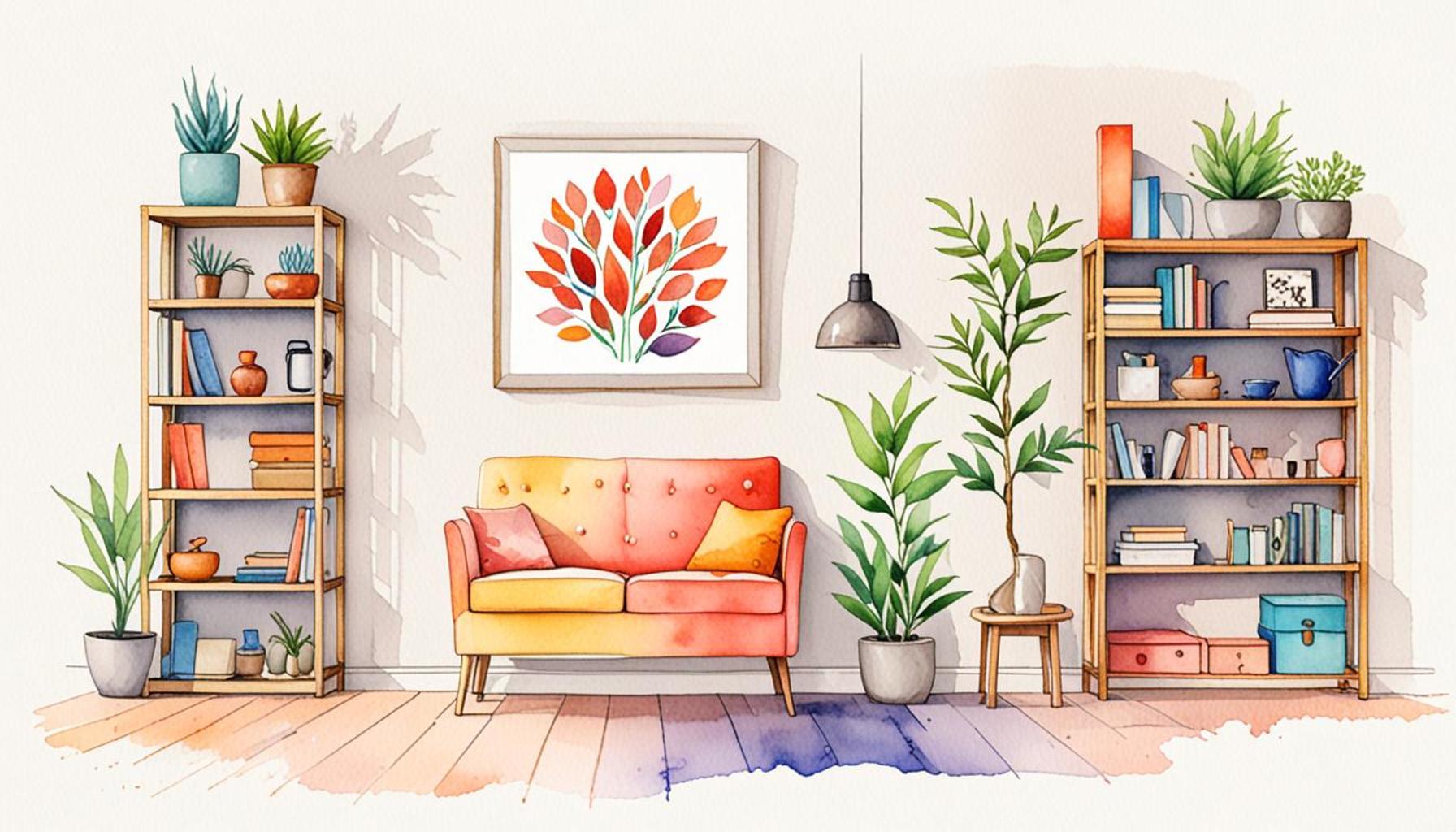Intentional Design for Multifunctional Spaces: Optimizing Every Square Meter with Minimalism

The Evolution of Intentional Design
In a world where advancements in technology and shifts in lifestyle are constantly pressing against the boundaries of our living and working environments, the notion of intentional design has emerged as a guiding principle. Multifunctional spaces not only serve various purposes but also reflect our dynamic lifestyles. This approach is particularly relevant in contemporary urban settings, where every square foot counts. It invites a rethinking of the conventional separation of spaces.
The impact of minimalist design on our everyday surroundings cannot be overstated. As an example, consider the concept of a Murphy bed, which effortlessly folds away when not in use. This solution transforms a small room from a cramped bedroom into a spacious living area. The minimalist philosophy extends beyond furniture to encompass overall layout and design, bringing forth the idea that each area should serve multiple purposes:
- Enhanced functionality: In a studio apartment, a single room can be adeptly divided into a sleeping space, a workspace, and even a dining area, all without walls. Flexible furniture, such as extendable tables or modular sofas, can adapt to accommodate gatherings or solitary moments.
- Reduced clutter: By prioritizing essential items and opting for streamlined designs, individuals can maintain a calm and organized environment. Fewer possessions lead to less visual noise, allowing for mental clarity and tranquility.
- Cost efficiency: Choosing quality furnishings that are multifunctional can be a prudent financial decision. Instead of purchasing a separate desk and sofa, an individual might invest in a stylish sofa bed that fulfills both roles, ultimately saving money and enhancing space utilization.
As urban living continues to evolve, Americans are becoming adept at maximizing their living spaces through innovative designs. A remarkable example can be observed in the rise of tiny homes, where families have embraced compact living with smart storage solutions and adjustable furniture. In cities like New York and San Francisco, where real estate prices are notoriously high, such strategies are not just beneficial but essential.
By embracing intentionality in design, we can create environments that balance aesthetic appeal with practicality, leading to a higher quality of life. When spaces are meticulously planned to adapt to various functions, they invariably cultivate a sense of harmony.
Join us as we delve into the principles of intentional design in multifunctional living, exploring techniques that harmoniously fuse creativity with functionality, allowing for a rich and adaptable lifestyle in an ever-changing world.

DISCOVER MORE: Click here to learn about lighting’s influence on space perception
Principles of Intentional Design in Multifunctional Spaces
At its core, intentional design seeks to create environments that are not only aesthetically pleasing but also deeply functional, particularly in today’s increasingly space-constrained urban landscapes. The art of designing a multifunctional space revolves around understanding how different elements can interact and support various activities, while maintaining a sense of unity and purpose. As we explore the principles behind this innovative approach, it becomes clear that thoughtful planning can transform even the most compact areas into harmonious living and working environments.
One of the standout features of intentional design is its emphasis on adaptability. Multifunctional spaces should be able to transition seamlessly from one use to another. Consider these key principles:
- Flexible Layouts: By using open floor plans and movable partitions, residents can create distinct areas for various activities without permanently dividing the space. A dining area can become an office nook, and a living room can easily transform into a guest bedroom with the right design choices.
- Integrated Storage Solutions: Storage is a crucial element in minimizing clutter. Built-in shelving, under-bed drawers, and wall-mounted units can keep everyday items neatly tucked away while maximizing floor space. The integration of storage within furniture pieces, such as ottomans or coffee tables with hidden compartments, further enhances functionality.
- Versatile Furniture: The shift towards quality over quantity is significant in intentional design. Furniture that serves multiple purposes, like a sofa that converts into a bed or an extendable dining table, can ensure that each piece adds value to the space. This not only allows for a more functional layout but also contributes to a minimalist aesthetic.
The advantages of embracing a minimalist mindset in conjunction with intentional design are numerous. Not only does it allow residents to maximize their space, but it also cultivates a lifestyle of simplicity and sustainability. Areas that are intentionally designed can reduce energy consumption by utilizing natural light and materials effectively. For instance, elements like large windows and reflective surfaces can enhance brightness and airiness, which are particularly crucial in smaller homes.
Moreover, adopting intentional design principles can lead to enhanced well-being. Cluttered environments can contribute to stress and anxiety, whereas a thoughtfully curated space fosters a sense of calm and balance. Research indicates that minimalism can improve focus and contribute to mental clarity by creating a more organized and serene atmosphere. Such environments resonate deeply with the concept of whole-person wellness, where space plays a pivotal role in our overall health.
As we continue our exploration of intentional design, it is essential to consider how technological integration further amplifies multifunctionality. Smart devices can transform the way we interact with our living spaces, automating tasks and enhancing convenience without sacrificing the clean, minimalist aesthetic we seek. The fusion of technology with thoughtful design creates an innovative landscape, inviting us to rethink what is possible in our homes and workspaces.
Exploring the Advantages of Multifunctional Spaces
As living environments become increasingly compact, the concept of intentional design for multifunctional spaces has gained significant traction. This approach not only embraces minimalism but also optimizes every square meter of available space, creating an efficient and aesthetically pleasing living experience. Below is an informative table that highlights the key advantages of this design philosophy.
| Advantage | Details |
|---|---|
| Space Efficiency | Maximizes utility by ensuring that every item serves a purpose or can transform into a different function. |
| Aesthetic Flexibility | Allows for seamless transitions between activities while maintaining a clean and organized visual appeal. |
| Cost-Effective | Reduces the need for oversized furniture by combining functionality, leading to financial savings. |
| Increased Focus | Promotes mindfulness and concentration by limiting distractions in a well-organized environment. |
Intentional design transforms limitations into opportunities for creativity and innovation in space usage. By embracing minimalism, individuals can experience a more harmonious and fluid lifestyle, where each square meter is curated to enhance daily living.
DISCOVER MORE: Click here to enhance your communication skills
Technological Advancements Enhancing Intentional Design
As we delve deeper into the world of intentional design, it’s evident that the integration of technology plays a crucial role in optimizing multifunctional spaces. In an era where smart technology is becoming ubiquitous, homes are no longer just places for living; they are dynamically changing experiences that adapt to the needs of residents. The advent of smart home devices facilitates a new level of convenience and efficiency, reinforcing the minimalist philosophy that less is often more.
Smart home hubs, such as Amazon Echo or Google Nest, can streamline daily activities and reduce clutter by centralizing control over devices and appliances. For instance, smart lighting systems allow homeowners to control ambiance with a simple voice command or app, eliminating the need for multiple light fixtures and creating a versatile atmosphere that suits various uses—be it a cozy movie night or an energizing home office environment. Furthermore, intelligent thermostats can learn a household’s schedule and optimize energy consumption, aligning well with a minimalist approach that emphasizes sustainability.
The growth of smart furniture is also transforming intentional design. Items such as adaptable desks that can adjust height electronically cater to individuals who may work from home and need to switch between sitting and standing. With the rise of remote work in the U.S., combining workplace functionality with ergonomic design is essential for enhancing productivity without compromising comfort.
Another exciting aspect of technology in multifaceted spaces is augmented reality (AR) and virtual reality (VR). These tools are reshaping how designers and residents visualize spaces. For instance, AR applications enable homeowners to move furniture virtually, assess layouts, and visualize color palettes before committing to changes. This capability supports the intentional design philosophy, ensuring that every element placed in the home is meaningful, contributes to functionality, and reflects the homeowner’s style. Moreover, these technologies can help maintaining a minimalist aesthetic by allowing one to experiment and reflect on choices before making permanent alterations.
The Role of Nature in Intentional Design
Another key principle intertwining with intentional design is the incorporation of biophilic elements—an approach that connects occupants with nature. Integrating natural materials, plants, and outdoor vistas within compact living areas can transform the ambience while promoting well-being. For example, utilizing large windows and creating indoor garden spaces can enhance the feeling of openness, allowing for better light circulation and an inviting atmosphere.
Moreover, plants have been shown to improve air quality and boost mood, providing a dual benefit to multifunctional environments. Vertical gardens or hanging planters can be excellent solutions for small spaces where traditional gardening might not be feasible. Such elements not only beautify spaces, but they also emphasize intentional design’s goal of creating habitats that nurture and foster a healthier lifestyle.
Further exemplifying this trend, wellness-focused designs are gaining prominence, aiming to enhance physical and mental health through architectural choices. This includes ensuring adequate natural light, good airflow, and quiet spaces for relaxation, paving the way for residents to truly thrive within their homes.
The confluence of technology, nature, and intentional design principles underscores the evolving nature of multifunctional spaces. By recognizing the interplay between these elements, homeowners can create well-balanced environments that promote both productivity and tranquility, effectively utilizing every square meter while embracing the minimalist ethos.
DIVE DEEPER: Click here to unlock the secrets of delegation
Conclusion: Embracing Intentional Design for Multifunctional Spaces
In a world increasingly defined by multifunctional spaces, intentional design stands as a powerful methodology that enables us to maximize every square meter while adhering to the principles of minimalism. By integrating advanced technology, such as smart home devices and adaptable furniture, alongside natural elements, we cultivate environments that are not only aesthetically pleasing but also inherently practical.
As we strive for layers of functionality in our living spaces, the combination of smart solutions and biophilic design offers residents an unparalleled opportunity to enhance their quality of life. For instance, incorporating plants not only improves air quality but also nurtures mental well-being, contributing to a sustainable lifestyle. This dual synergy encapsulates the essence of intentional design—every aspect is chosen deliberately, fostering spaces that respond to the evolving needs of their occupants.
Moreover, the rapid advancement of technology invites further exploration into how our homes can evolve as dynamic, responsive environments. With tools like augmented reality allowing us to experiment with layouts before making commitments, we empower ourselves to create spaces that truly resonate with who we are. In embracing this holistic view of design, we open doors to innovative solutions that optimize our surroundings, ensuring that even the smallest areas are thoughtfully utilized.
As we move forward, the commitment to intentionality in our design practices will keep us aligned with broader sustainability goals, promoting healthier and more fulfilling living experiences. Embracing these concepts not only transforms our own homes but also contributes to a future where every square meter serves a purpose—a vision worth aspiring to.


